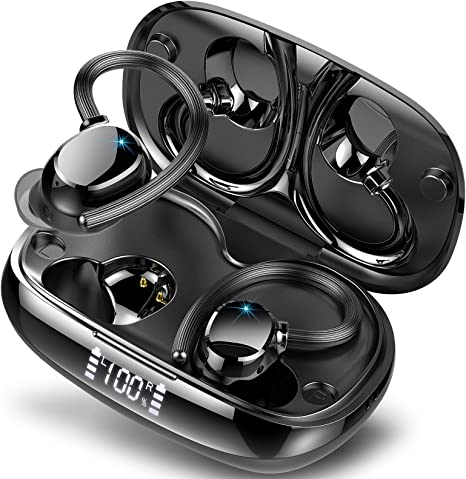The Stereo System's Great Circle: The Evolution of the Home Music Center
Update on Oct. 11, 2025, 5:01 p.m.
Look closely at a modern, compact network receiver like the Denon RCD-N12. It plays music from the internet, from your phone, from physical discs, and from a turntable. It connects to your television and can send music to other rooms wirelessly. It is, in essence, the single, centralized heart of a home’s entire audio life. And in this role, it represents not a radical invention, but the culmination of a 70-year-long evolutionary circle.
The story of home audio is a fascinating pendulum swing between two ideals: the all-in-one convenience of a single music center and the specialized performance of separate components. To understand where we are today and where we might be heading, we must first look back at the journey—a journey driven as much by technological innovation as by cultural and social change.

The Age of Furniture: The Console Stereo (1950s-1960s)
In the post-war era, the home music center was not a collection of electronics; it was a piece of furniture. The console stereo was a massive, beautifully crafted wooden cabinet that dominated the living room. Inside this single piece, you’d find a turntable, an AM/FM radio tuner, a tube amplifier, and built-in speakers.
It was the ultimate all-in-one device, designed for family enjoyment and aesthetic harmony. Performance was secondary to its role as a social hub and a symbol of middle-class prosperity. It was simple to operate and seamlessly integrated into the home. But for a budding generation of listeners who cared deeply about sound quality, the console’s compromises—speaker vibration interfering with the turntable, underpowered amplifiers—were becoming apparent.
The Golden Age of Components: The Rise of the Audiophile (1970s)
The 1970s marked a rebellion against the console. A technological boom, particularly the widespread adoption of the solid-state transistor, made high-performance audio components smaller, more reliable, and more affordable. The market exploded with separate turntables, tuners, integrated amplifiers, and receivers from brands like Marantz, Pioneer, and Kenwood.
This was the birth of the “Hi-Fi” hobby as we know it. The focus shifted from integration to specialization. Building a stereo system became a rite of passage, a mix-and-match game of finding the perfect synergy between components. The visual aesthetic was one of gleaming silver faceplates, knobs, and VU meters—a celebration of technology itself. This was the era that defined the “audiophile” and cemented the idea that true high fidelity required separate components.
The Return of Convenience: The Mini-System (1980s-1990s)
As the Hi-Fi hobby grew more complex and, to some, more intimidating, the pendulum began to swing back. The 1980s and 90s saw the rise of the “mini-system” or “shelf system.” These were essentially downsized, modernized versions of the console philosophy. A main unit, often with a dual cassette deck and a multi-disc CD changer, was paired with matching speakers.
They offered a simpler, more affordable path to decent sound than a full separates system. While scorned by hardcore audiophiles for their performance compromises, they were wildly popular, bringing component-style looks to the masses without the complexity or cost. They were the “good enough” solution for a generation raised on CDs and radio.

The Great Circle: The Networked Hi-Fi Center (2000s-Present)
For a time, it seemed the dedicated audio system might fade away, replaced by iPod docks, Bluetooth speakers, and soundbars. But a confluence of powerful new technologies has brought the “music center” concept roaring back to life, completing the circle, but on a much higher evolutionary plane.
Today’s integrated network receivers are the spiritual descendants of the 1950s console, but they are infinitely more capable. This is not simple history repeating itself; it is a synthesis enabled by a new technological foundation:
- Efficient Power: The maturation of Class D amplification allows for powerful, cool-running amplifiers to be housed in small chassis without the massive transformers and heat sinks of the past.
- The Network as a Source: The internet is now the world’s largest record store. Wi-Fi and Ethernet are now primary inputs, as critical as the turntable was in 1960. Platforms like HEOS and protocols like AirPlay 2 turn the system into a node in a whole-home audio network.
- The Onboard Computer: A powerful System-on-a-Chip (SoC) is the brain, running an operating system that manages network connections, decodes high-resolution audio files, and provides a user interface.
- Software-Defined Features: Crucially, these are not static devices. Like a smartphone, their capabilities can be enhanced via firmware updates. A new streaming service can be added, or audio performance can be tweaked years after the product was purchased. This makes the device adaptable and future-proof in a way no previous generation of audio equipment could be.
(Actionable Asset: An infographic timeline would be placed here)
- 1950s: Image of a wooden console stereo. Caption: The Music Center as Furniture.
- 1970s: Image of a silver-faced receiver and turntable stack. Caption: The Rise of Separates and the Audiophile.
- 1990s: Image of a black plastic 3-CD changer mini-system. Caption: Convenience Returns in a Smaller Package.
- 2020s: Image of a sleek, modern network receiver like the RCD-N12. Caption: The Synthesis: Networked, Powerful, and Software-Defined.
The modern music center is therefore not a compromise, but a deliberate act of intelligent integration. It acknowledges the lessons of the past—the desire for simplicity from the console era and the demand for performance from the age of separates—and merges them using a technological toolkit that was unimaginable to its predecessors. It has completed the great circle, returning to the ideal of a single, central heart for our musical lives, but this time, with a networked, high-fidelity, and ever-evolving soul.



















